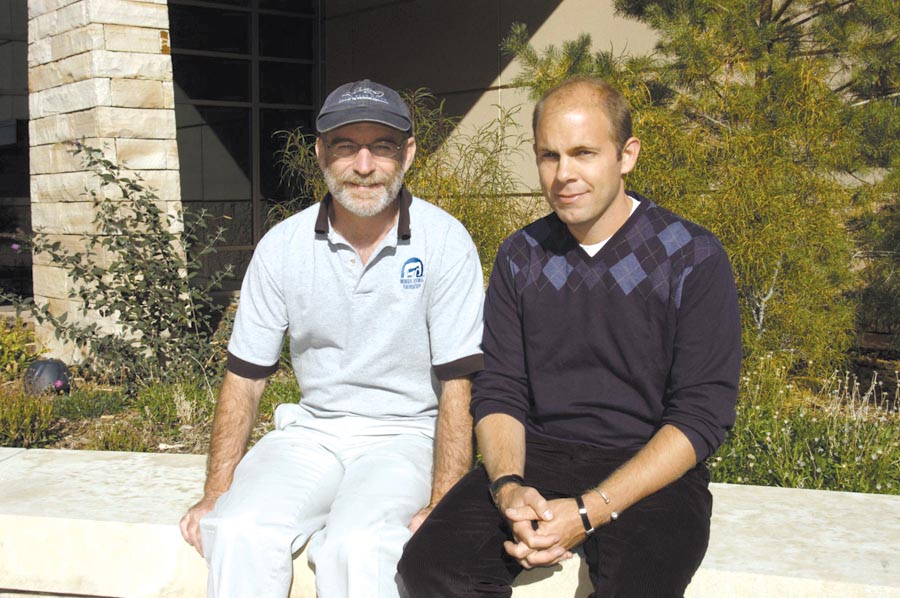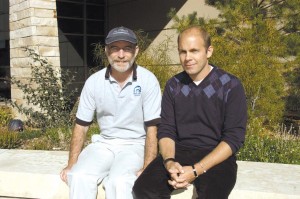Dr. Michael Cranfield, veterinarian and director of the Mountain Gorilla Veterinary Project, spoke at a fundraiser on Saturday, October 23, at The Wildlife Experience, a wildlife conservation museum that features natural history, fine art and film. The Morris Animal Foundation, the largest nongovernmental, nonprofit source that funds humane animal health studies worldwide to advance veterinary medicine and conserve wildlife, hosted the event.
The organization has not only helped gorillas, but also many endangered creatures including cheetahs, giant pandas and river otters. The executive directors of both Morris Animal Foundation and The Wildlife Experience spoke at the proceedings. In addition, Betty White, actress, animal lover and trustee, appeared to introduce Cranfield, who spoke purposefully to raise dollars for MGVP.
The project was established to save the world’s highly endangered mountain gorillas. East Central Africa is where most of the diminishing primates reside, in the forests of Rwanda, Uganda, and the Democratic Republic of Congo. This ambitious undertaking is unique in that it’s one of the few programs to provide health care to an endangered species in their natural habitat.
The area maintained as a nature preserve is in Rwanda’s Volcanoes National Park. It’s the same park in which anthropologist Dr. Dian Fossey, depicted with Dr. Jane Goodall in the movie, “Gorillas in the Mist,” studied and tried to sustain these majestic beasts. It was Fossey that asked for the Morris Animal Foundation’s help in this endeavor. The Mountain Gorilla Veterinary Center, which started with one clinic in Rwanda, manned by a single veterinarian, has grown into a team of 14 doctors, scouring the mountain for samples, treating unhealthy gorillas and entering data regarding their day-to-day observations.
Samples, mostly gorilla feces, are housed in the MGVP’s Biological Resource Center, located at the Morris Animal Foundation’s headquarters three and a half miles west of Centennial Airport.
“I think it’s great how a lot of this actually started and is continuing here in Colorado,” applauded Cranfield.
Cranfield received his DVM from the University of Guelph in Ontario. Currently, he works at the Baltimore Zoo and has done so for about 22 years. He directs MGVP part-time.
When the project started in 1986, only 248 mountain gorillas were known to be alive in the Virunga mountain range of Central Africa. Now, there are about 700 that live in the mountains of east South Central Africa, 360 in the Virunga Mountains and 340 in the Bwindi Impenetrable Forest National Park Uganda. Cranfield believes his project is vital not only for the conservation of gorillas, but also for other diminishing breeds.
“I think it’s important because it’s such a high-profile animal to start with, and if we can’t save the great apes, then I don’t think we have much hope of saving some of the lesser species,” he said.
To save the great apes, Cranfield believes the public must be educated as to why they are endangered. It’s due to factors such as poaching, the illegal hunting of animals for bush meat, and the illegal grazing of cattle that encroaches on the gorilla habitat.
“One impact that’s occurring is logging, which is decreasing the habitat considerably,” he said. “The industry people, in the west part of Africa in particular, have access to the forest where they didn’t before. Now they have roads and they’re using trucks to transport or supply things resulting in the deforestation of animals’ homes. Another reason that these primates’ numbers are so low is because they can contract the same diseases that human beings are susceptible to, and they can receive them from any person who comes in contact with their environment.”
Cranfield said that when it comes to the animals being exposed to various diseases, they worry about their contact with tourists, the local school population and the people that work daily with the gorillas, such as veterinarians, trackers and guides.
Since gorillas can catch measles and acquire parasites, the former MGVP director requested the addition of an employee health program. In the 1990s, under Cranfield’s supervision, that vision became a reality.
“The results were very interesting,” reported Cranfield, “At least 50 percent of the employees had at least one parasite that could be transferred to gorillas and 11 percent of the trackers and guides were HIV positive. In addition, we found that 20 percent of them needed eye glasses. Here it was their job to be monitoring these gorillas and they couldn’t even see well. So we provided them with eyeglasses.”
The gorillas are monitored and provided with the best possible medical care, whether it comes to administering antibiotics for an infectious wound or setting a broken bone for one that fell from a tree. In 1988, the Mountain Gorilla Veterinary Center had to vaccinate 85 gorillas due to a widespread respiratory outbreak, suspected to be measles. The center’s philosophy is that intervention is a last resort, as the doctors don’t invade the animal’s territory unless it is absolutely necessary for their survival. There are some unfortunate cases, however, in which the animal doesn’t carry through.
“There was one sad instance during a time when a lot of mountain gorillas were being poached,” remembered Cranfield. “One came in a sack. Chris Whittier, my assistant, identified it as a baby mountain gorilla. It stayed in our hands for about three months; it was a tremendous effort to try to introduce this animal into a group (of other gorillas).
“Chris even had the forethought to check the health of the people that had been with this animal. Most of them were condemned criminals; Chris had the whole jail taken to the hospital for a health check so we could understand what this animal had been exposed to. We put an enormous amount of time and effort in it; that led to the understanding that the pathology was a perforated colon. We repaired it back to health and then the country’s government wanted the animal back out in the forest, at all costs, right away. It was placed in that forest in the rainy season, all by itself, and it died of hypothermia.”
Caring for gorillas can be quite a challenge when working in an environment of civil unrest and rebel uprisings in places such as Burundi or Rwanda. Whittier, however, says he doesn’t fear for his personal safety.
“I feel safer in Rwanda than I do in the U.S. most of the time,” he said. “I think part of that is that there’s no such thing as random violence in the places we work. Generally, you don’t worry about things like being pick-pocketed, because essentially, aside from military and soldiers, nobody has any guns. There isn’t the same level of being robbed at gunpoint there.”
He said the dangers are on a larger scale, such as civil war breaking out.
‘That’s clearly a reality there,” he said. “Generally speaking, those things don’t happen without warning, and we work closely enough with the local people and the military to have the intelligence or some ability to predict if that’s about to happen. I think that even if things got really serious we’d have 24 hours to be able to get out of the country.”
The numbers of the mountain gorillas are still very low; they continue to be one of the most endangered species on this planet. Currently, with one species, numbers are slowly dwindling due to encroachment on their habitat from manufacturing.
“We have some eastern lowland gorillas that number around 15,000, although it’s really hard to estimate; due to the area being politically unsettled, it could really be closer to 8,000,” said Cranfield. “The biggest reason for the low population is coltan mines.”
Coltan is the material used in cell phones to make the batteries last longer.
“People in the United States can affect what’s happening in Congo,” he said. “They need to watch their consumerism and where they invest, because sometimes they invest in a big company that is ecologically friendly in the United States, but is not doing great things for, say, over in the Congo or elsewhere. People should ask where their investments are going. A lot of times, someone will innocently invest in things that aren’t necessarily ‘green’ companies.”
For more information, or to donate to the Morris Animal Foundation, call 800-243-2345 or visit [http://www.morrisanimalfoundation.org/]. For more information about The Wildlife Experience, visit [http://www.thewildlifeexperience.com/].












